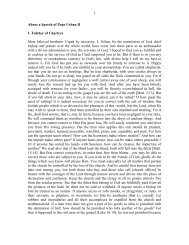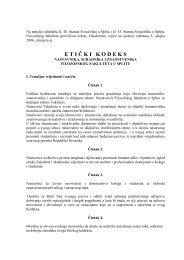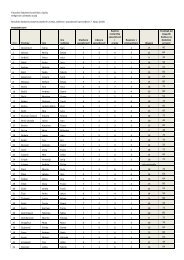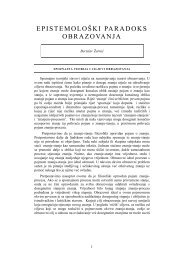Understanding Human Communication
Understanding Human Communication
Understanding Human Communication
Create successful ePaper yourself
Turn your PDF publications into a flip-book with our unique Google optimized e-Paper software.
306 PART THREE COMMUNICATION IN GROUPS<br />
hesive groups have greater control over the behavior of their members. 21 With<br />
characteristics like these,it’s no surprise that highly cohesive groups have the potential<br />
to be productive. In fact, one study revealed that cohesiveness proved to<br />
be the best predictor of a group’s performance, both initially and over time. 22<br />
Despite its advantages, cohesiveness is no guarantee of success: If the group<br />
is united in supporting unproductive norms, members will feel close but won’t<br />
get the job done. For example, consider members of a group of employees who<br />
have a boss they think is incompetent and unfair. They might grow quite cohesive<br />
in their opposition to the perceived tyranny, spending hours after (or during)<br />
work swapping complaints. They might even organize protests,work slowdowns,<br />
grievances to their union, or mass resignations. All these responses would boost<br />
cohesiveness,but they would not necessarily make the company more successful<br />
nor help the employees.<br />
Research has disclosed a curvilinear relationship between cohesiveness and<br />
productivity: Up to a certain point, productivity increases as group members become<br />
a unified team. Beyond this point, however, the mutual attraction members<br />
feel for one another begins to interfere with the group’s efficient functioning.<br />
Members may enjoy one another’s company, but this enjoyment can keep<br />
them from focusing on the job at hand.<br />
The goal, then, is to boost cohesiveness in a way that also helps get the job<br />
done.There are eight factors that can bring about these goals.<br />
1. Shared or Compatible Goals People draw closer when they share a similar<br />
aim or when their goals can be mutually satisfied. For example, members<br />
of a conservation group might have little in common until a part of the<br />
countryside they all value is threatened by development. Some members<br />
might value the land because of its beauty; others, because it provides a<br />
place to hunt or fish;and still others,because the nearby scenery increases the<br />
value of their property;but as long as their goals are compatible,this collection<br />
of individuals will find that a bond exists that draws them together.<br />
2. Progress toward These Goals While a group is making progress,members<br />
feel highly cohesive; when progress stops, cohesiveness decreases. All other<br />
things being equal, players on an athletic team feel closest when the team is<br />
winning. During extended losing streaks, it is likely that players will feel less<br />
positive about the team and less willing to identify themselves as members<br />
of the group.<br />
3. Shared Norms and Values Although successful groups will tolerate and<br />
even thrive on some differences in members’attitudes and behavior,wide variation<br />
in the group’s definition of what actions or beliefs are proper will reduce<br />
cohesiveness. If enough members hold different ideas of what behavior is<br />
acceptable,the group is likely to break up.Disagreements over values or norms<br />
can fall into many areas, such as humor, finance, degree of candor, and proportion<br />
of time allotted to work and play.<br />
4. Lack of Perceived Threat between Members Cohesive group members<br />
see no threat to their status, dignity, and material or emotional well-being.<br />
When such interpersonal threats do occur,they can be very destructive.Often<br />
competition arises within groups, and as a result members feel threatened.<br />
Sometimes there is a struggle over who will be the nominal leader. At other<br />
times, members view others as wanting to take over a functional role (prob-

















